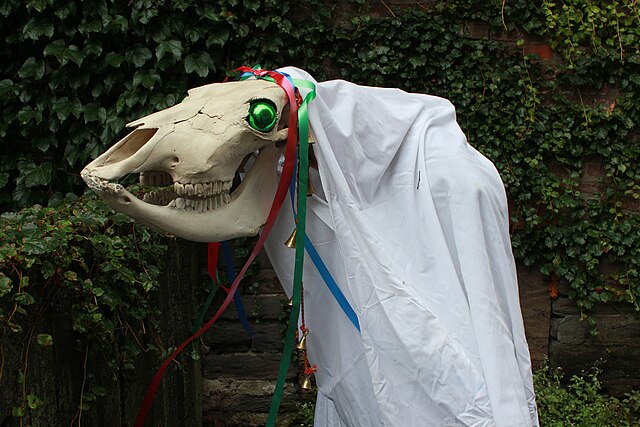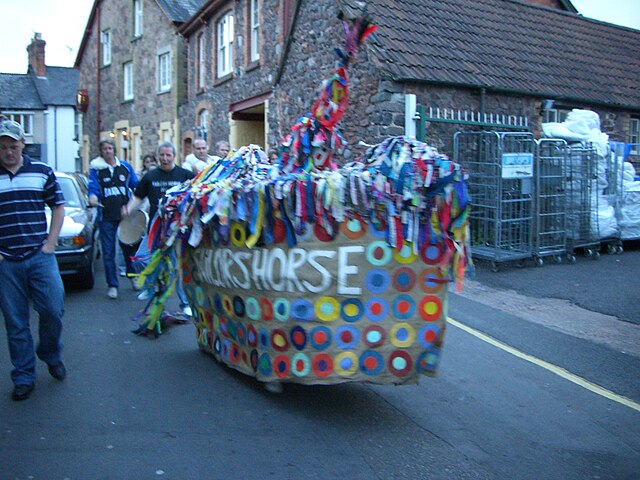Hoodening, also spelled hodening and oodening, is a folk custom found in Kent, a county in South East England. The tradition entails the use of a wooden hobby horse known as a hooden horse that is mounted on a pole and carried by a person hidden under a sackcloth. Originally, the tradition was restricted to the area of East Kent, although in the twentieth century it spread into neighbouring West Kent. It represents a regional variation of a "hooded animal" tradition that appears in various forms throughout Britain and Ireland.
Hoodeners in Deal, Kent, in 1909
Four Kentish hooden horses of 20th and 21st-century date, on temporary display at Maidstone Museum
"Satan," a hooden horse used by the St Nicholas at Wade with Sarre hoodeners; on display at the Maidstone Museum
The earliest surviving descriptions of hoodening claim that the hooden horse contained a horse's skull, akin to this modern example of the Mari Lwyd, a Welsh hobby horse.
In folklore, a hobby horse is a costumed character that features in some traditional seasonal customs, processions and similar observances around the world. In England, they are particularly associated with May Day celebrations, mummers' plays and the Morris dance.
Painting of a hobby horse with Morris dancers beside the River Thames at Richmond, London; detail of Thames at Richmond, with the Old Royal Palace, c. 1620 (Fitzwilliam Museum, unknown artist)
The Old 'Oss capturing a young woman during the May Day festival at Padstow, Cornwall
Minehead Hobby Horse
Some modern dance sides have reinterpreted the hobby horse: this hooden horse is a zebra








